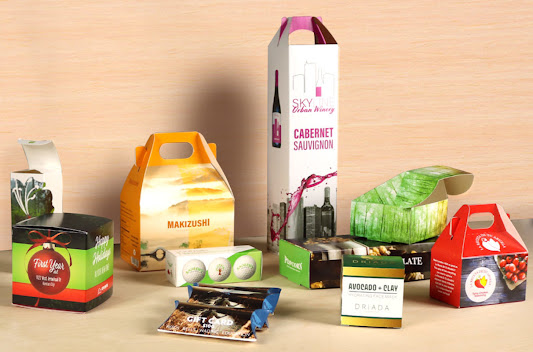Box printing is a means to allow you to unleash the potential that your brand has through the box. With expert printing and ideas, you’ll be able to improve the way your box looks.
Some of the ideas include:
Art design
Finish added
Application of packaging
Design of packaging
Production run
Here, we’ll go over how to really maximize box printing, along with some of the unique ways to take box printing to the next level.
Digital printing
Digital printing is one that’s super popular, and we see this both in retail, and ecommerce food and product packaging.
They’re fast to make, with no costs for setup. If you’re a small business or are trying to run a seasonal or small packaging run, this might be good. Startups also thrive on this type of packaging because it’s easier on the wallet than other types of packaging products.
There are different substrates that can be used with this, including corrugated boxes, cartons for folding, sleeves, rigid paper boxes, stickers, and bags. ‘
They’re good for setting up, and they do produce a high quality print that’s detailed. There’s low minimums too, so if you’re just starting out, it’s great. There are also varnishes of matte and gloss, and variable printing within similar runs.
However, the downside is that since they only utilize CMYK, it cannot color match to the pantones out there. it can get high in terms of costs later on, so use it for high volume options to get the best prices.
It is sustainable, and produces far less waste, and you can even get water based inks for it.
Lithographic Printing
This is a longtime favorite, as it offers classic, sophisticated looks. They’re good for production runs that are high in volume. So cosmetics, pharmaceuticals, gifts, and food and drink are good for this.
It works well for corrugated packaging, rigid paper boxes, folding cartons, and paper bags.
Some of the pros are that it’s detailed, and high in quality. There are specialty finishes, and color matching. It’s the best for larger unit runs.
If you are a small business, this might not be ideal since it can cost more. the lead times also may be longer. There's also no variants for product options.
This is a good one for cardboard options, but opting for lamination makes it a challenge to recycle. For the most part, eco friendly water and vegetable inks definitely work for this, and it’s good for log printing runs.
Flexographic Printing
Finally, we got flexo, which is good for pretty much anything. Shipping boxes use this for bar codes, logos, and information.
Postal boxes love to use this. printed messages in the box also are done with this. pizza boxes too can also keep costs to a minimum if they use this.
There are limitations, but it does work. If it’s a paper bag, corrugated packaging, or paper tape, it works.
It’s cost-effective and provides good definition, so good for all types of runs.
The cons are the costs for setup is expensive, due to the plates you have to get. So if you’re a small business, or doing a small run, it might not be ideal for you.
There are also limitations with extensive, complicated artwork, especially when compared to other printing.
Flexo printing, however, is environmentally friendly, and it utilizes recycled, and sustainable materials. Water-based types of inks, along with solvent-based inks are changing the game, and the packaging can be recycled too.
Interested? Contact us today and let us choose your printing means.



